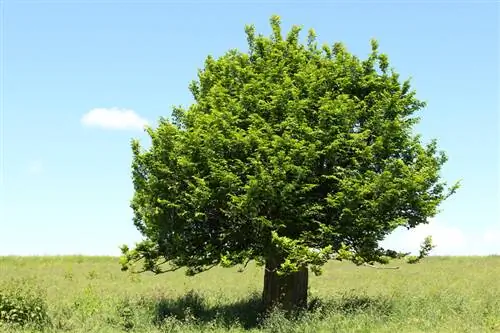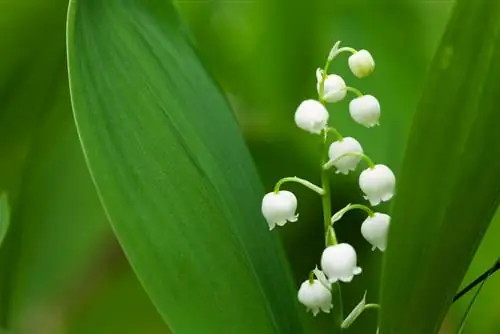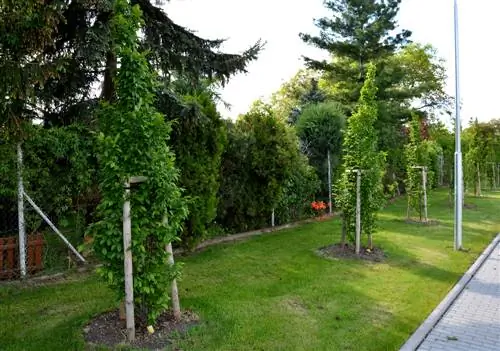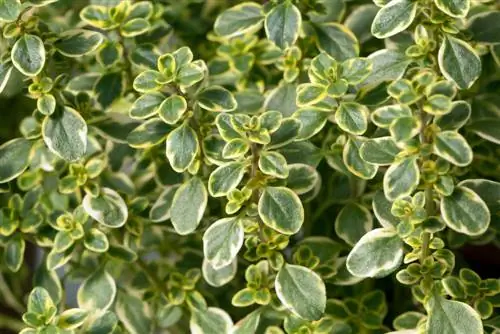- Author admin [email protected].
- Public 2023-12-16 16:46.
- Last modified 2025-06-01 06:02.
Despite its name, the hornbeam is not a beech tree. It belongs to the birch family. Hornbeams are native to our latitudes and occur in the wild. The hornbeam is popular as a single tree or as a hornbeam hedge in the garden, in the cemetery or in parks.
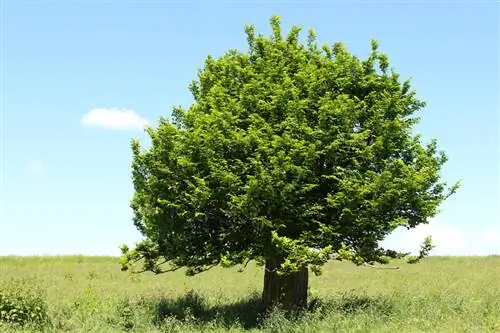
What are the characteristics of the hornbeam?
The hornbeam (Carpinus betulus) is a deciduous deciduous tree from the birch family. It grows to a height of 15-25 meters and is native to Central Europe. The leaves are ovate and serrated; the flowering period is in May and June. Hornbeams are often used as hedge plants and have ecological importance for birds.
Hornbeam profile
- Botanical name: Carpinus betulus
- Tree species: deciduous deciduous tree
- Popular names: hornbeam, hornbeam, hornbeam
- Family: Birch family (Betulaceae)
- Species: approx. 170
- Origin: Central Europe
- Distribution: Central Europe
- Age: up to 300 years
- Height: 15 to 25 meters
- Crown: wide and round
- Bark: smooth
- Wood: very hard wood
- Root: Heart Root
- Leaves: egg-shaped, serrated, 5 - 10 cm long, 3 - 6 cm wide
- Flower: monoecious, inconspicuous female flowers, male flowers in catkin shape
- Flowering time: May, June
- Fruits: small nuts about one centimeter long
- Fruit ripening: September, October
- Frost hardness: up to minus 20 degrees
- Use: ornamental plant, hedge plant
- Special features: Leaves hang on the tree for a long time and only fall when new growth occurs
The hornbeam is not a beech
The hornbeam got its name because of its similarity to the leaves of the common beech. This is why it is often confused with the real beech.
Use in the garden
The hornbeam is often kept in the garden as a hedge plant. Since it keeps its leaves for a long time, it forms a dense privacy screen almost all winter long.
The leaf coloring is also very decorative. Soft green leaves emerge in spring, which turn darker in summer. In autumn the hornbeam leaves shine yellow. The leaves are lighter on the underside than on the upper side.
In the wild, the hornbeam can often be found as underplanting for very tall trees. It tolerates shade well and can cope with almost any soil. It just can't tolerate waterlogging for a long time, even if it survives short-term flooding unscathed.
Ecological benefits of the hornbeam
Hornbeams are often used by blackbirds and other birds to build nests in.
In the garden, hornbeam hedges generally do not produce fruit because the hedge is cut in spring. Most of the inflorescences are removed.
History of the hedgebeam
In the 18th century, the hornbeam, whose name is derived from the Old German word for hedge beech, enjoyed great popularity in baroque gardens. There, entire labyrinths, figures, archways and much more were cut from the robust hornbeam.
A particularly beautiful example of garden design with hornbeams is the baroque garden of Schleißheim Castle, where many of these old hornbeams can still be seen today.
Tip
The hornbeam wood is one of the hardest woods in Europe. Hornbeam was therefore previously used in vehicle construction. Today, due to the not so decorative grain, the wood is occasionally used as parquet, in musical instruments, but mostly as firewood.

